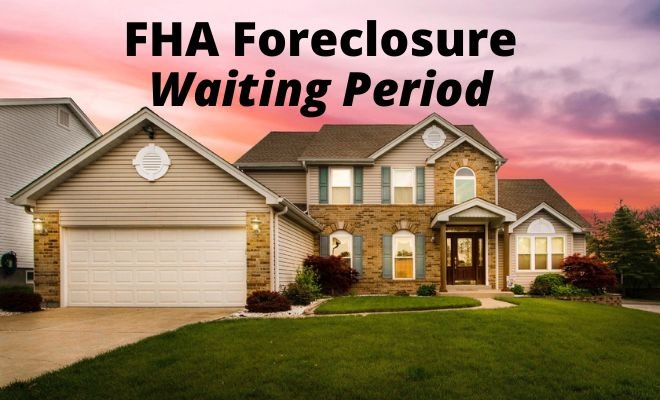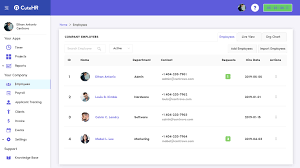FHA Loan Foreclosure Waiting Period: What You Need to Know Before Buying Again

After experiencing the financial and emotional burden of a foreclosure, many Americans ask an important question: what is the FHA loan foreclosure waiting period? If you’re considering getting back into homeownership through an FHA loan, understanding the rules, timelines, and exceptions around foreclosure recovery is essential.
In this detailed guide, we break down everything you need to know about the FHA loan foreclosure waiting period in 2025, including how long you need to wait, what steps to take next, and how to improve your chances of loan approval.
What Is a Foreclosure?
Before diving into timelines, let’s briefly explain what foreclosure means. Foreclosure is a legal process in which a lender takes possession of a property after the homeowner fails to make mortgage payments. This can have a major impact on your credit score and future loan eligibility.
But the good news is that foreclosure doesn’t disqualify you from ever owning a home again—especially with an FHA loan, which is designed to help people with past financial challenges.
What Is the FHA Loan Foreclosure Waiting Period?
The FHA loan foreclosure waiting period is typically three years from the date the foreclosure was finalized. This means that you must wait three years before becoming eligible for another FHA-insured mortgage.
The clock starts ticking from the date the foreclosure was completed—not the date you moved out, stopped making payments, or received the first notice of default. It’s important to check your foreclosure documents or credit report to find the exact foreclosure completion date.
Why Does the FHA Have a Waiting Period?
The waiting period exists to give lenders confidence that you’ve had time to recover financially and demonstrate responsible credit behavior. After all, the FHA backs these loans, and they must ensure applicants are less likely to default again.
However, the FHA loan foreclosure waiting period is more forgiving than many conventional loan programs, which often require up to seven years of waiting after foreclosure.
Are There Exceptions to the FHA Waiting Period?
Yes, the FHA does allow certain exceptions to the standard three-year waiting period in cases of extenuating circumstances. If you can prove that the foreclosure occurred due to events beyond your control, you may qualify for a new FHA loan in as little as one year.
Qualifying extenuating circumstances may include:
-
Serious illness or medical emergency
-
Death of the primary wage earner
-
Job loss due to company shutdown
-
Natural disasters (fire, flood, etc.)
To be considered for an exception to the FHA loan foreclosure waiting period, you must provide documentation, such as hospital records, termination letters, death certificates, or insurance claims.
Even with a valid exception, the borrower must also show:
-
Re-established good credit
-
Stable employment and income
-
No further derogatory credit events
What If You Had a Bankruptcy and Foreclosure?
Sometimes, borrowers face both bankruptcy and foreclosure. This raises an important question: which waiting period applies?
-
Chapter 7 Bankruptcy: FHA requires a 2-year waiting period from the discharge date.
-
Foreclosure: Requires a 3-year waiting period from the completion date.
In most cases, the longer waiting period applies, so if your foreclosure occurred after your bankruptcy discharge, you’ll need to wait the full three years.
However, in rare cases where both events were caused by the same hardship, the FHA may evaluate your application for early requalification under extenuating circumstances.
How to Calculate Your FHA Waiting Period
To avoid confusion, here’s how to calculate your FHA loan foreclosure waiting period step by step:
-
Find the Foreclosure Completion Date: This can be found in your public records, HUD-1 statement, or credit report.
-
Add Three Years: Count exactly 36 months from that date.
-
Check for Eligibility Exceptions: If you had a major hardship, explore whether you qualify under FHA’s extenuating circumstances rule.
-
Get Prequalified Before the Date Arrives: Lenders can start evaluating your profile as the date approaches, especially if your credit is strong.
Can You Get a Conventional Loan Sooner?
In some cases, you may qualify for a conventional loan through Fannie Mae or Freddie Mac in seven years, but under certain conditions, you might be eligible as early as four years after foreclosure—especially with a strong down payment and re-established credit.
However, if you’re looking for a faster path back to homeownership, FHA remains your best option due to its more lenient loan foreclosure waiting period rules.
What Should You Do During the Waiting Period?
If you’re still within the three-year FHA loan foreclosure waiting period, use this time wisely to rebuild your financial profile. Lenders will scrutinize your post-foreclosure behavior, so it’s crucial to show improvement.
Here are key steps to take:
1. Rebuild Your Credit Score
Make timely payments on all credit accounts, reduce your credit utilization ratio, and avoid taking on new debt unless necessary. A good credit score significantly improves your chances of FHA approval.
2. Save for a Down Payment
Although FHA loans require as little as 3.5% down, having more saved up demonstrates financial stability. Plus, it gives you more flexibility in negotiating better terms.
3. Avoid New Negative Marks
No late payments, no new delinquencies, and no new foreclosures or bankruptcies. Even one recent negative item can disqualify you.
4. Maintain Stable Employment
FHA lenders typically want to see at least two years of steady employment. Ensure your income is verifiable and consistent before applying.
5. Keep Debt-to-Income Ratio in Check
Try to keep your DTI below 43%. The lower your DTI, the better your loan approval odds.
FHA Loan Requirements After Foreclosure
Once your FHA loan foreclosure waiting period is complete, you’ll still need to meet general FHA eligibility criteria:
-
Credit Score: Minimum 580 (with 3.5% down) or 500 (with 10% down)
-
Employment History: At least two years of stable work
-
DTI Ratio: Below 43%, though exceptions exist
-
Down Payment: Minimum 3.5%
-
Primary Residence: Property must be your primary home
Even after waiting three years, you should be fully prepared to meet these standards to secure FHA loan approval.
Final Thoughts on the FHA Loan Foreclosure Waiting Period
So, what is the FHA loan foreclosure waiting period? In most cases, it’s three years from the foreclosure completion date. However, exceptions exist for documented extenuating circumstances, which may reduce the period to just one year.
Foreclosure may be a setback, but it’s not the end of the road. FHA loans offer a second chance for individuals ready to rebuild their financial future and step back into homeownership. By understanding the rules, improving your credit, and preparing your application carefully, you’ll be well-positioned when the waiting period ends.




